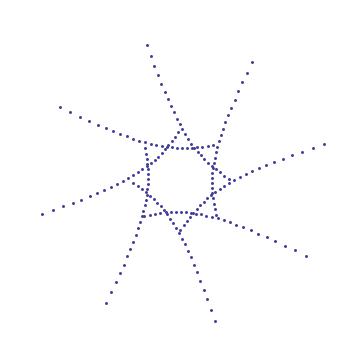That is the sound of the gravitational waves hitting the LIGO detector. A chirp.
That is also the sound of the celebratory hurrah’s from the gravity community. We finally have experimental (observational) confirmation to a prediction made by Einstein’s theory of general relativity 100 years ago.
The quest to hear gravitational waves started about 50 years ago by Webber and it is only now that enough sensitivity is available in the detectors to be able to hear the ripples of spacetime as they pass through the earth.
The particular event in question turned the equivalent of 3 solar masses into gravitational waves in a few seconds. This is much brighter in power than the brightest supernova. Remember that when supernova collapse, the light emitted from them gets trapped in the shells of ejected mater and the rise of the signal and afterglow is extended to months. This was brighter in energy than all the output of all the stars in the visible universe combined! The event of Sep. 14 2015 recorded the merger of two black holes of intermediate masses (about 30 solar masses each) about 1.3 billion lightyears away.
The official press release is here, the PRL paper is here.
The New York times has a nice movie and article to mark this momentous scientific breakthrough.
Congratulations to the LIGO team.
Usual caveat: Now we wait for confirmation, yadda yadda.
Posted in gravity, Physics | Tagged gravitational waves, gravity, LIGO | 1 Comment »
As the rumor noise level has increased over the last few weeks, and LIGO has a press conference scheduled for tomorrow morning, everyone in the gravity community is expecting that LIGO will announce the first detection of gravitational waves.
A roundup of rumors can be found here and here and here and here.
Preprints with postdictions that sound as predictions can be found here for example. I’ve been told that the cat has been out of the bag for a while, and people with inside information have been posting papers to the arxiv in advance of the LIGO announcement.
Obviously this is very exciting and hopefully the announcement tomorrow will usher a new era of gravitational astronomy.
For those of you who have free time to read on the history of gravitation, here is a good link to many famous papers on the subject:
http://journals.aps.org/general-relativity-centennial
Happy anniversary GR!
Posted in gravity, relativity |
In case you have not found out already, the Nobel prize in physics for 2013 was awarded to Francois Englert and Peter Higgs
“for the theoretical discovery of a mechanism that contributes to our understanding of the origin of mass of subatomic particles, and which recently was confirmed through the discovery of the predicted fundamental particle, by the ATLAS and CMS experiments at CERN’s Large Hadron Collider”
Congratulations to the winners of the prize. Here is the link to the official announcement http://www.nobelprize.org/nobel_prizes/physics/laureates/2013/
This is a prize for the so-called Higgs mechanism. In a certain sense this is another Nobel prize for the Standard model of the electroweak theory of Weinberg and Salam, which was verified experimentally at the LHC with the announcement of a Higgs-like particle on the fourth of July of 2012. The agreement with the Standard model has improved with the additional data that has been taken at the LHC experiment since then.
One of my favorite ways of accounting for the Higgs particle is that the electroweak theory of massless gauge Bosons and the Snatdard model Higgs sector has
bosonic degrees of freedom in the ‘unbroken phase’. This is two polarizations for each massless gauge boson particle, and four degrees of freedom from the Higgs sector of the theory.
This same theory has
degrees of freedom in the `broken phase’. This is 3 polarizations for each massive gauge boson, 2 polarizations for the photon and the extra one degree of freedom in the box is the so called Higgs particle.
It is the presence of this extra degree of freedom that was observed at CERN, with all the properties expected from Standard model computations.
Posted in Uncategorized | Tagged Nobel Prize in physics 2013. | 1 Comment »
A rather hot topic of modern research in quantum gravity has hit the news stands. This is the “firewall” business that got started in Santa Barbara.
Dennis Overbye has a piece on it in the New York times. Have fun reading it.
Posted in Quantum Gravity | Tagged firewalls, Quantum Gravity | 2 Comments »
Posted in Physics | 4 Comments »
I’m always surprised at what comes out of my screen when I’m playing with some ideas. As long as I remove the axis of the plot and the context, it becomes art.
Posted in Art, string theory |
It’s very nice to discover humor in a paper that I thought I knew all too well. Above is a a Feynman diagram taken from said paper. Although not as cute as a penguin, it might compete with other dog renditions in popular culture.
Posted in humor, Physics | 4 Comments »


